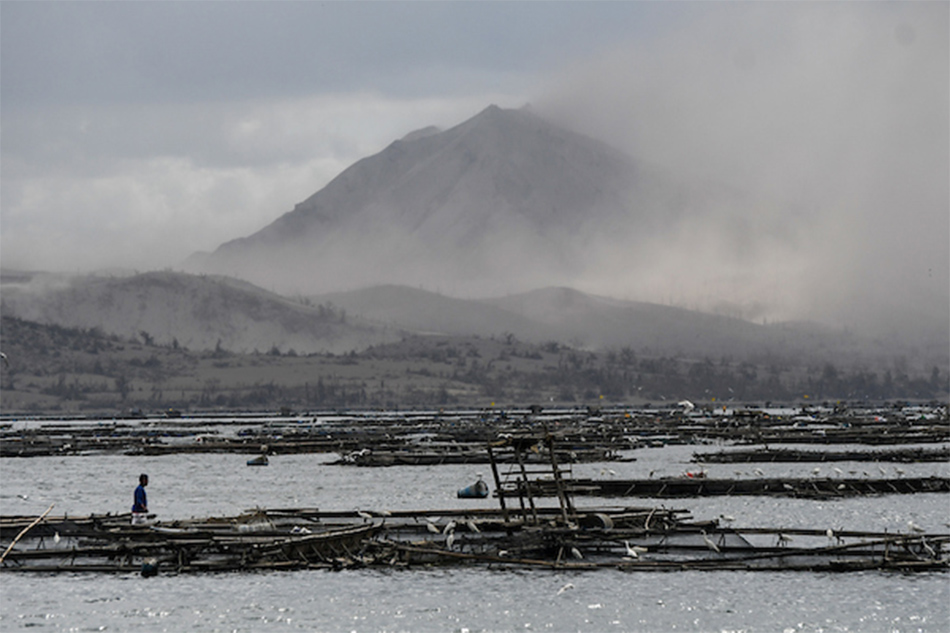Taal simmers down but danger not over — Phivolcs
Taal simmers down but danger not over — Phivolcs
Kristine Sabillo,
ABS-CBN News
Published Jan 21, 2020 10:59 AM PHT
|
Updated Jan 21, 2020 12:26 PM PHT
Volcano is still inflating - Phivolcs
MANILA - The Philippine Institute of Volcanology and Seismology (Phivolcs) on Tuesday said that while there is a seeming decline in the volcanic activities of Taal, people should not feel that it is safe enough to return to the high-risk areas.
"There is a seeming weakening of the activities but it doesn’t mean the danger is over,” said Phivolcs Volcano Monitoring and Eruption Prediction Division head Mariton Bornas during a press conference on Tuesday morning.
In its 8 a.m. bulletin, Phivolcs said that in the last 24 hours, it only monitored “weak steam emission” from the volcano that generated ash plumes 500 to 600 meters high. Sulfur dioxide emissions were also lower at an average of 344 tons per day. During the start of the eruptive activities of Taal on January 12 and in recent days, sulfur dioxide levels have been fluctuating, reaching around 4,000 to 5,000 tons per day. Bornas said the fluctuation is due to the interaction of ground water and magma, which emits sulfur dioxide when it is near the surface.
“The incidence of volcanic earthquakes is indeed lowering,” Bornas said, adding that the type of quakes monitored shows that there is still magma movement underground.
ADVERTISEMENT
Since January 12 1 p.m., the Philippine Seismic Network (PSN) recorded 718 volcanic earthquakes. Of that number 176 are magnitude 1.2 to 4.1 and were felt at Intensities I to V. But since 5 a.m on January 20 until the next day, only five volcanic earthquakes were recorded. However, the Taal Volcano Network, which can record small earthquakes undetectable by PSN, were able to record 448 volcanic earthquakes. Seventeen of those were low-frequency earthquakes, which signify movement of magma.
Bornas said the only time Phivolcs will lower its alert level 4 on Taal is if they see an “overall trend” of all parameters.
“(But) the readings on the sulfur dioxide are fluctuating,” she said. “We cannot just trust the daily reading. We have to look at the trend.”
Bornas said that even if the volcanic activity further weakens, magma is already in place.
“We have ground deformation parameters that the volcano is still inflated and is still inflating,” she said. “The magma is already there and the volcano can easily erupt.”
ADVERTISEMENT
Last week, fissures or cracks were seen in different parts of Batangas and the volcano island, which meant that magma was moving and making the ground swell.
Responding to a local government official who questioned Phivolcs’s opinion on whether Taal will still erupt, Bornas said: “Volcanoes do not erupt continuously.”
“There are [instances when] Taal erupted for a long time (7 months) in 1754, which were marked by a period of lull,” she said, adding that there are many factors to consider such as the crystallizing of magma.
“As long as there is probability” we can’t lower the alert level, Bornas said. Taal Volcano at Alert Level 4 means that a hazardous explosive eruption is possible within hours to days. Bornas reiterated that people should not go back to the volcano island and the high-risk areas in the 14-kilometer radius of the Taal Volcano main crater.
ADVERTISEMENT
ADVERTISEMENT



